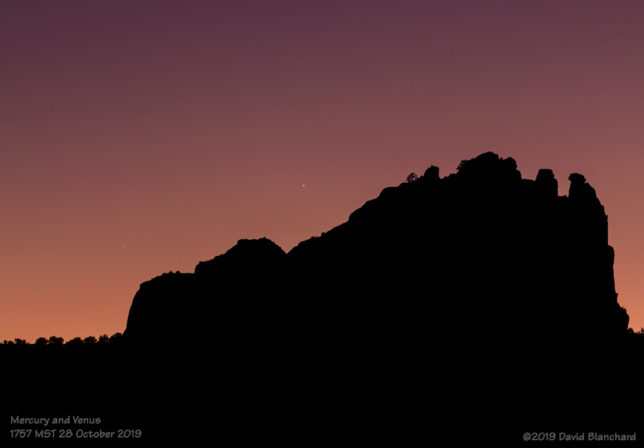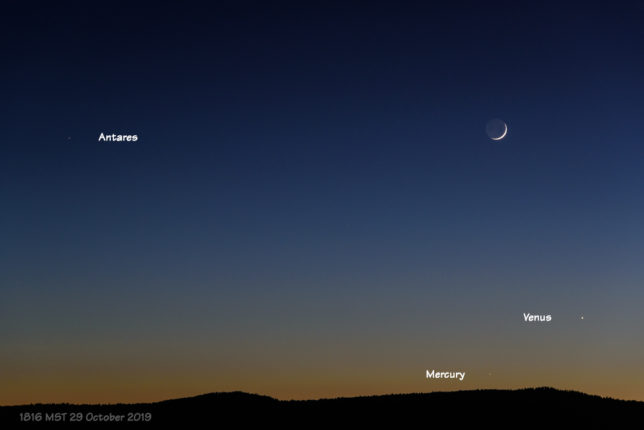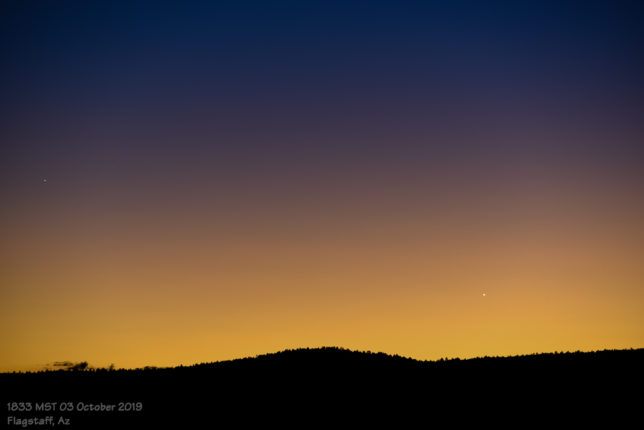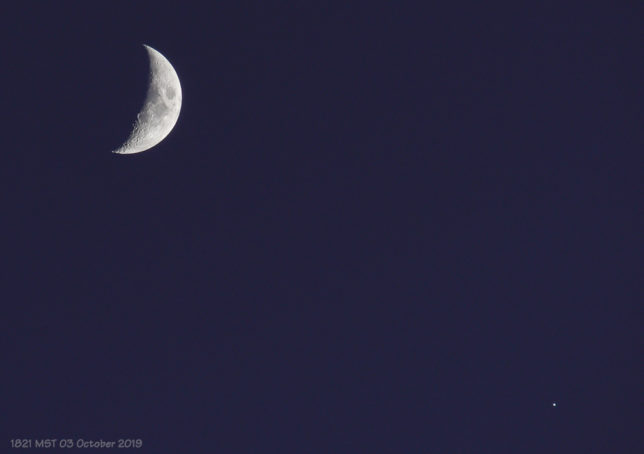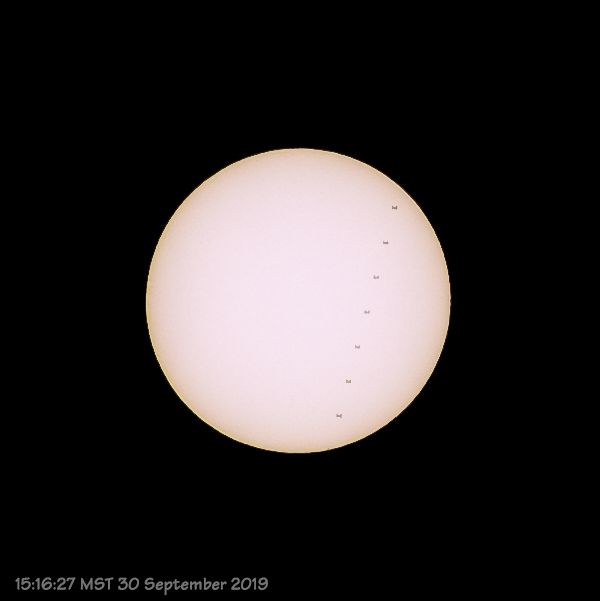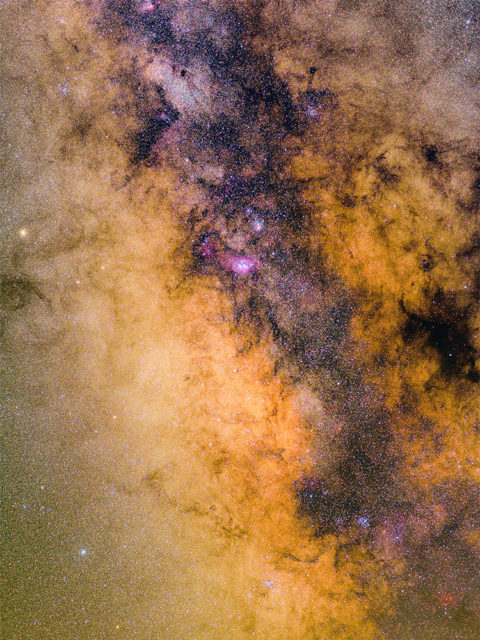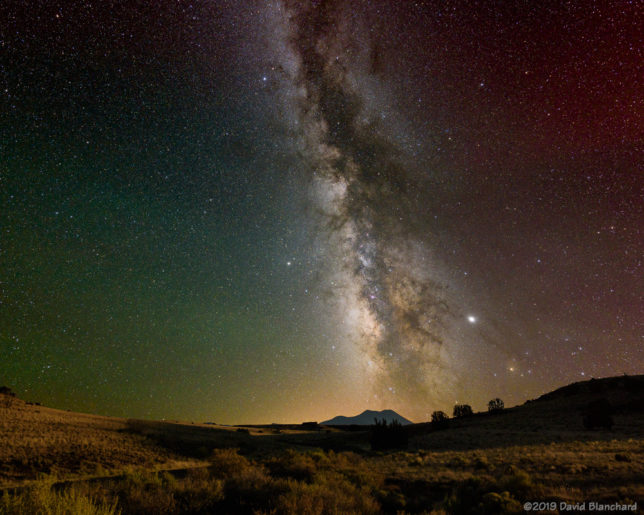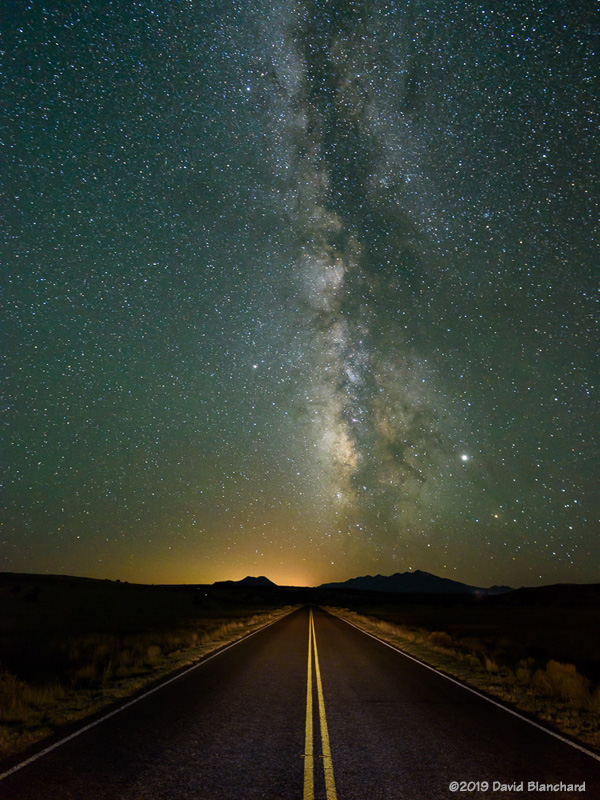The weather was perfect with clear skies and light winds in northern Arizona to photograph the transit of Mercury across the face of the Sun.
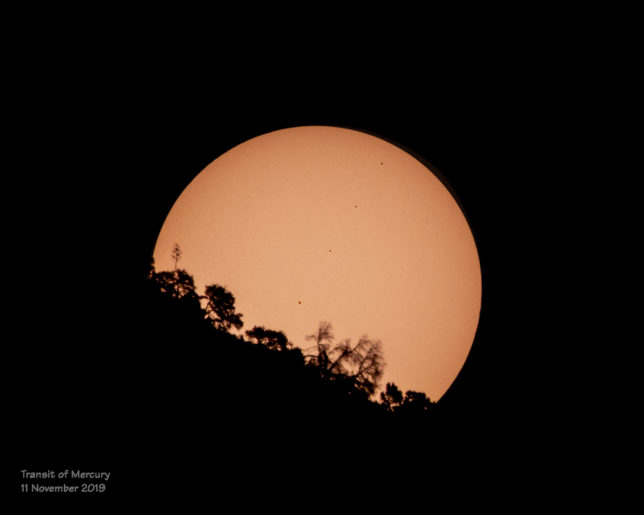
From Wikipedia: “A transit of Mercury takes place when the planet Mercury passes directly (transits) between the Sun and Earth, becoming visible against the solar disk. During a transit, Mercury appears as a tiny black dot moving across the disk of the Sun.”
Mercury is small so it is difficult to photograph a transit without using a telescope or large telephoto lens. I photographed the transit using a (1) full-frame Nikon DSLR and a 70-300mm telephoto zoom lens, and (2) a Panasonic Lumix FZ150 “bridge camera” with a 600mm [equivalent] zoom. The Nikon takes vastly superior images; the Lumix has more zoom. And the better results came from the Lumix.
The photograph above shows the first image taken as the Sun had partially cleared the cliffs. Subsequent images were stacked and aligned on this image so that it shows a sequence of positions during the transit.
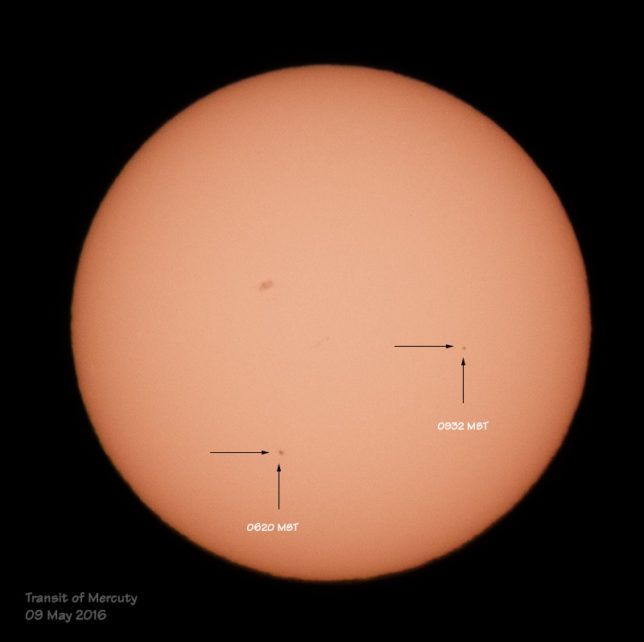
The last transit of Mercury was 09 May 2016; the next will be 13 November 2032. The image above is from the 2016 transit.
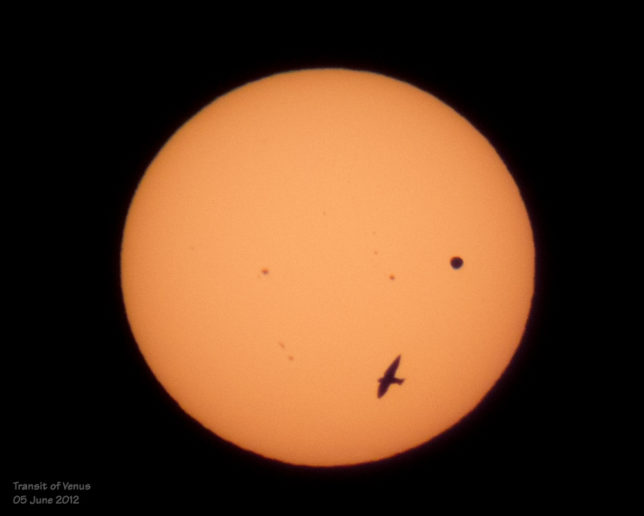
Transits of Venus are easier to capture because Venus is much larger than Mercury and also closer to Earth. The last two transits of Venus were 05 June 2012 and 08 June 2004. The next transits of Venus will not occur until 10–11 December 2117 and 8 December 2125. Above is an image of the 2012 transit with a bird also “transiting” the sun.

